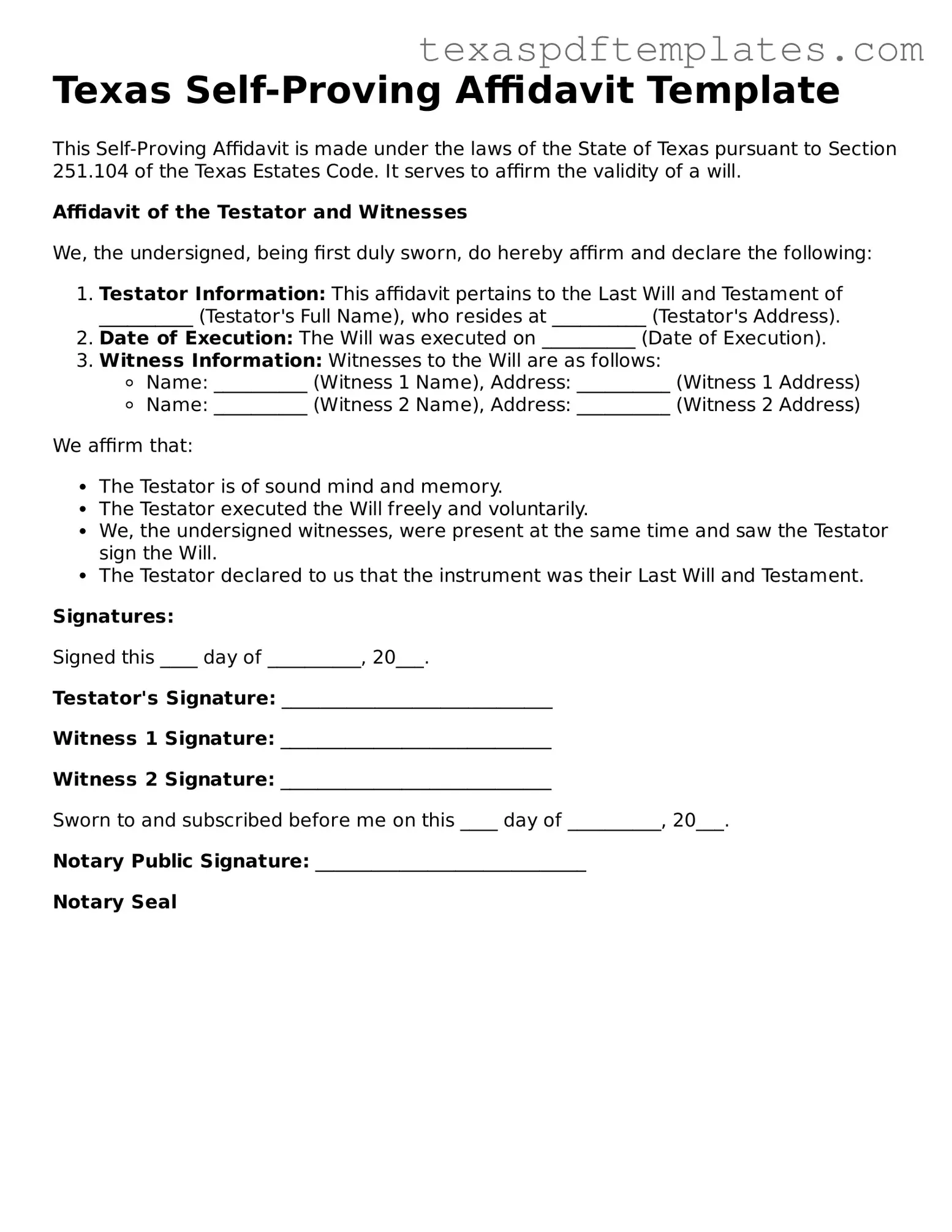Texas Self-Proving Affidavit Template
This Self-Proving Affidavit is made under the laws of the State of Texas pursuant to Section 251.104 of the Texas Estates Code. It serves to affirm the validity of a will.
Affidavit of the Testator and Witnesses
We, the undersigned, being first duly sworn, do hereby affirm and declare the following:
- Testator Information: This affidavit pertains to the Last Will and Testament of __________ (Testator's Full Name), who resides at __________ (Testator's Address).
- Date of Execution: The Will was executed on __________ (Date of Execution).
- Witness Information: Witnesses to the Will are as follows:
- Name: __________ (Witness 1 Name), Address: __________ (Witness 1 Address)
- Name: __________ (Witness 2 Name), Address: __________ (Witness 2 Address)
We affirm that:
- The Testator is of sound mind and memory.
- The Testator executed the Will freely and voluntarily.
- We, the undersigned witnesses, were present at the same time and saw the Testator sign the Will.
- The Testator declared to us that the instrument was their Last Will and Testament.
Signatures:
Signed this ____ day of __________, 20___.
Testator's Signature: _____________________________
Witness 1 Signature: _____________________________
Witness 2 Signature: _____________________________
Sworn to and subscribed before me on this ____ day of __________, 20___.
Notary Public Signature: _____________________________
Notary Seal
